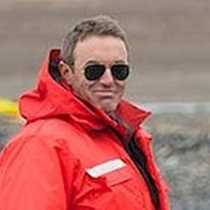Port Lockroy & the Gerlache
We awoke in the sheltered harbour at Port Lockroy this morning, home of the earliest British station in the region. Built during the Second World War in 1944, Base A was intended to monitor enemy shipping in the area. After the war the station became a jumping-off spot for expeditions surveying and mapping the region for the next 20 years. Abandoned in the early 1960’s, Base A quickly fell into disrepair and was nearly a wreck by the 1980’s. However, with the timely intervention of current base leader Rick Atkinson and several colleagues, and the backing of British Antarctic Survey and the UK Antarctic Heritage Trust, the modest building was restored and now serves as a museum and heritage center. Passing a rack of dogsleds and innumerable nesting Gentoo penguins, upon entering the ‘hut’ one is instantly transported back to the Antarctica of the 1950’s – men living simply in the wilderness, dependent not on technology but rather their own resourcefulness and practicality.
Meanwhile outside, the Antarctica of today unfolded before us. Our fleet of yellow kayaks circumnavigated the small island as several yachts lay at anchor in the sheltered harbour. One of these, Pelagic Australis, supports a National Geographic sponsored kayak expedition led by Jon Bowermaster, who has sailed on the National Geographic Endeavour in most oceans of the world. Before our departure, Jon and his companions came on board to give us a brief glimpse of life on a rather different expedition than our own. Not one of us seemed prepared to change places – National Geographic Endeavour is a very comfortable home indeed.
After weighing anchor, we sailed north through the Neumayer Channel and into the Gerlache Strait. The afternoon saw calm seas and the stunning panorama of the mountains of Brabant Island on the port side and the Antarctic peninsula to starboard. Topping it all off, several humpback whales were spotted, one of which breached repeatedly near the ship, then lazed on it’s back, waving its huge pectoral flippers in the air, as if to bid us adieu. Cameras clicked furiously on the foredeck as the leviathan raised flukes skyward, diving to gorge itself on the krill below. This shot represents not only a thrilling natural encounter, but also an important data point in an ongoing monitoring project tracking the movement of humpbacks from their breeding grounds along the coast of South America to their feeding grounds here in Antarctica. Comparable to a human fingerprint, the pigmentation on the humpback’s flukes is completely unique, allowing researchers to individually identify each whale photographed. This photo will be added to the Antarctic Humpback Whale Catalogue, and will forever remain a tangible asset of our voyage. Our memories, of course, are flooded with more personal and perhaps even more valuable images of this grand wilderness.
We awoke in the sheltered harbour at Port Lockroy this morning, home of the earliest British station in the region. Built during the Second World War in 1944, Base A was intended to monitor enemy shipping in the area. After the war the station became a jumping-off spot for expeditions surveying and mapping the region for the next 20 years. Abandoned in the early 1960’s, Base A quickly fell into disrepair and was nearly a wreck by the 1980’s. However, with the timely intervention of current base leader Rick Atkinson and several colleagues, and the backing of British Antarctic Survey and the UK Antarctic Heritage Trust, the modest building was restored and now serves as a museum and heritage center. Passing a rack of dogsleds and innumerable nesting Gentoo penguins, upon entering the ‘hut’ one is instantly transported back to the Antarctica of the 1950’s – men living simply in the wilderness, dependent not on technology but rather their own resourcefulness and practicality.
Meanwhile outside, the Antarctica of today unfolded before us. Our fleet of yellow kayaks circumnavigated the small island as several yachts lay at anchor in the sheltered harbour. One of these, Pelagic Australis, supports a National Geographic sponsored kayak expedition led by Jon Bowermaster, who has sailed on the National Geographic Endeavour in most oceans of the world. Before our departure, Jon and his companions came on board to give us a brief glimpse of life on a rather different expedition than our own. Not one of us seemed prepared to change places – National Geographic Endeavour is a very comfortable home indeed.
After weighing anchor, we sailed north through the Neumayer Channel and into the Gerlache Strait. The afternoon saw calm seas and the stunning panorama of the mountains of Brabant Island on the port side and the Antarctic peninsula to starboard. Topping it all off, several humpback whales were spotted, one of which breached repeatedly near the ship, then lazed on it’s back, waving its huge pectoral flippers in the air, as if to bid us adieu. Cameras clicked furiously on the foredeck as the leviathan raised flukes skyward, diving to gorge itself on the krill below. This shot represents not only a thrilling natural encounter, but also an important data point in an ongoing monitoring project tracking the movement of humpbacks from their breeding grounds along the coast of South America to their feeding grounds here in Antarctica. Comparable to a human fingerprint, the pigmentation on the humpback’s flukes is completely unique, allowing researchers to individually identify each whale photographed. This photo will be added to the Antarctic Humpback Whale Catalogue, and will forever remain a tangible asset of our voyage. Our memories, of course, are flooded with more personal and perhaps even more valuable images of this grand wilderness.



